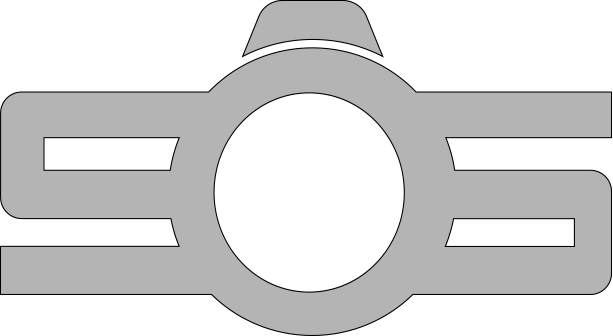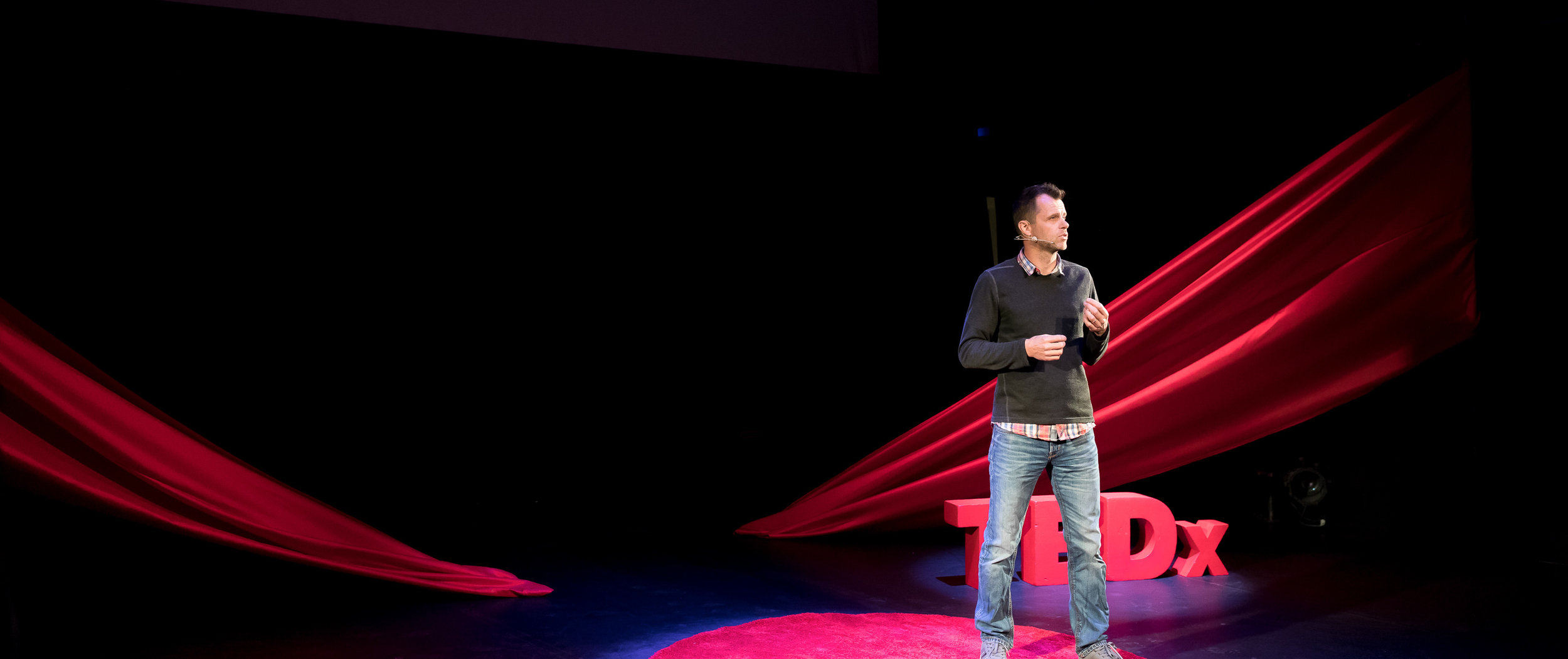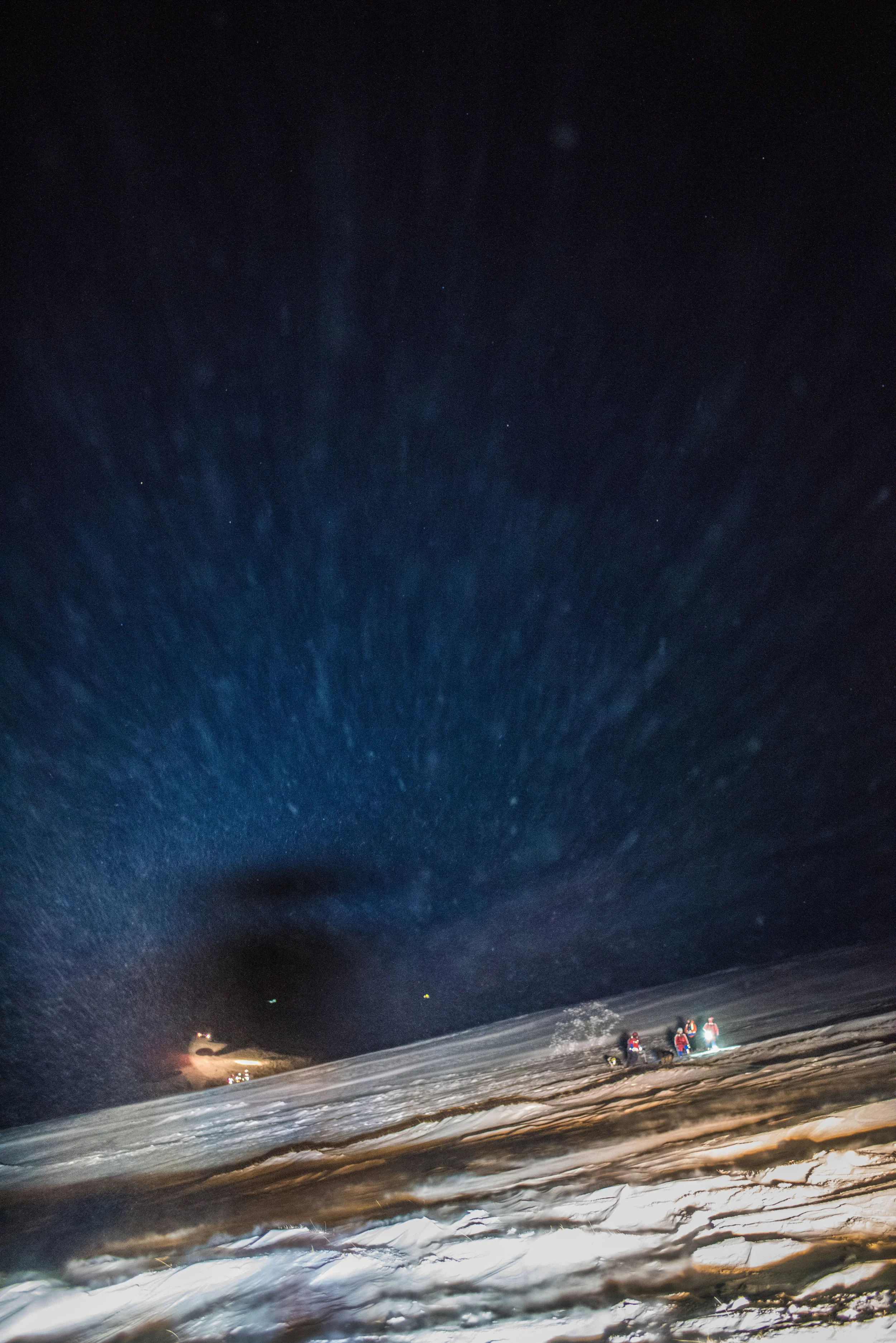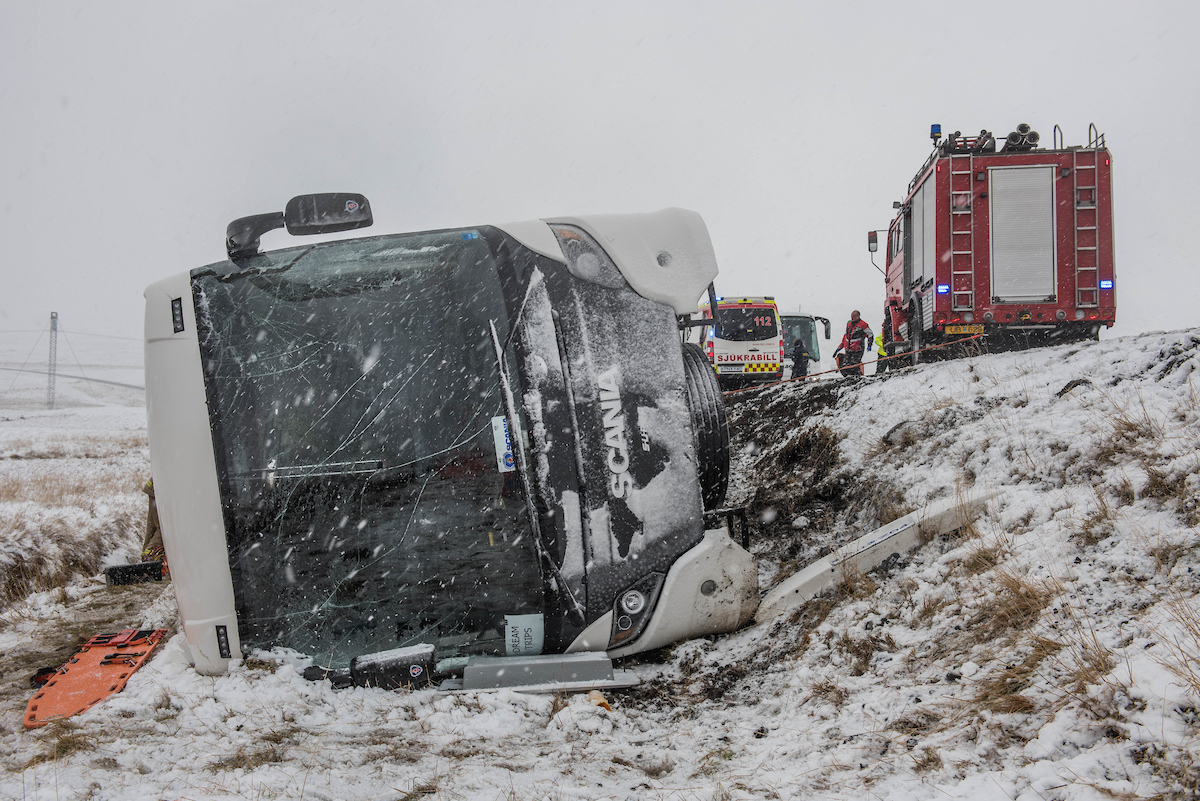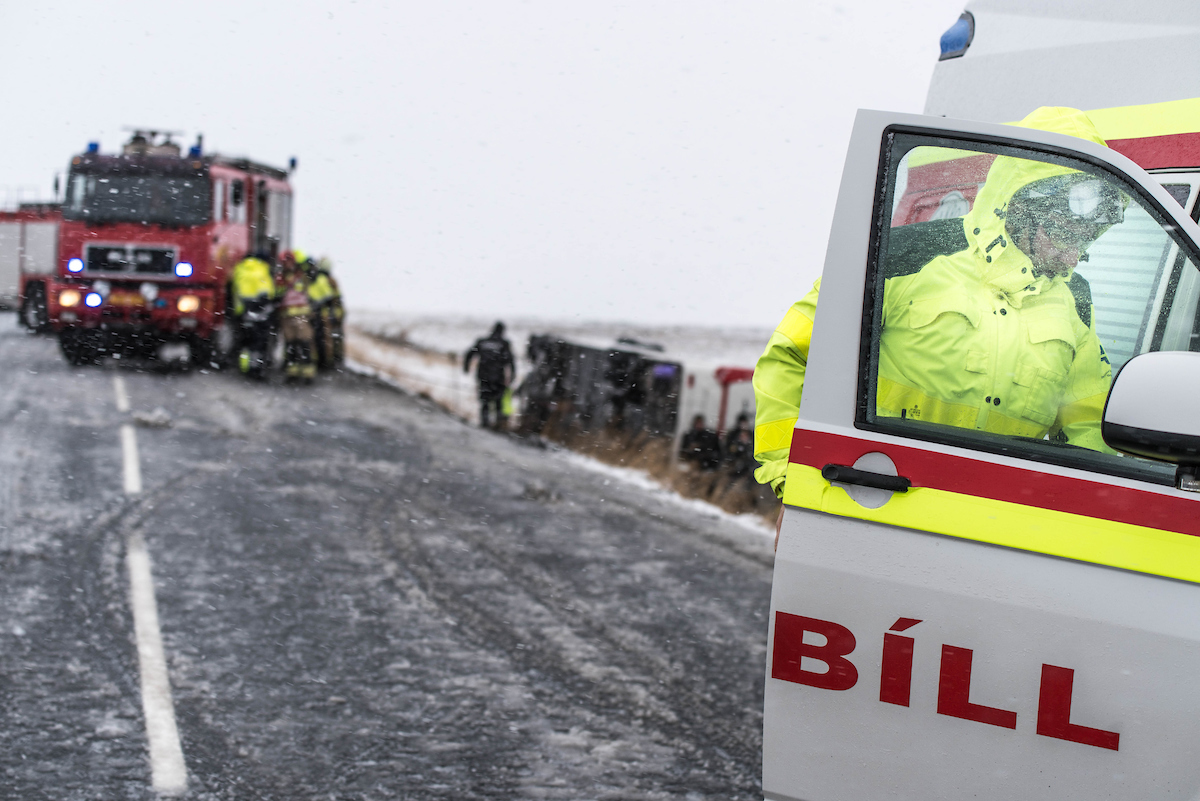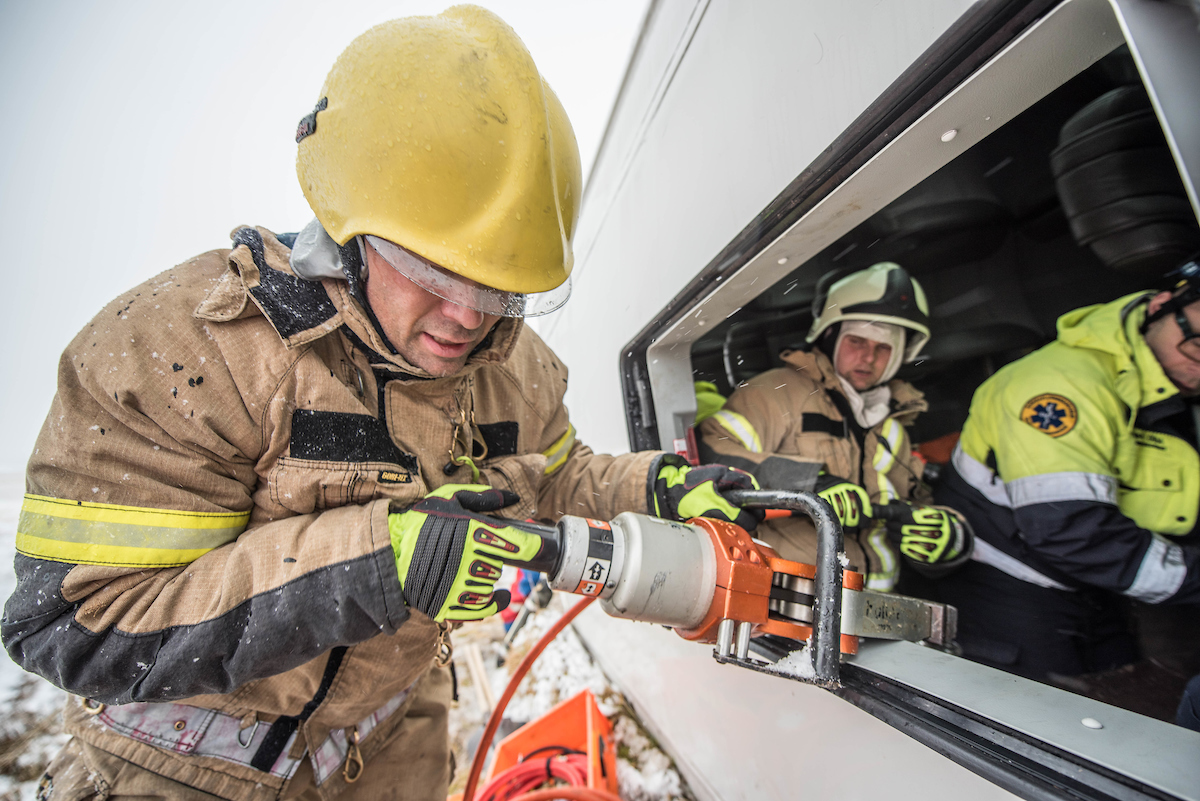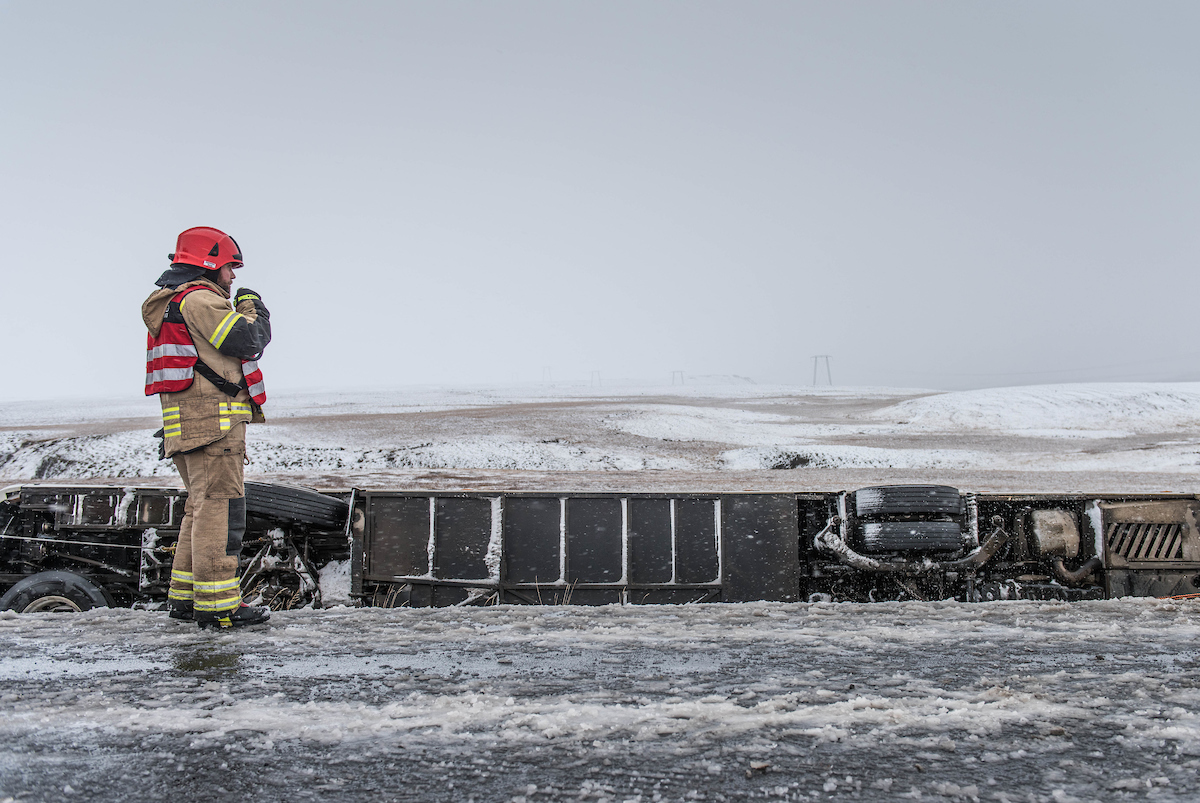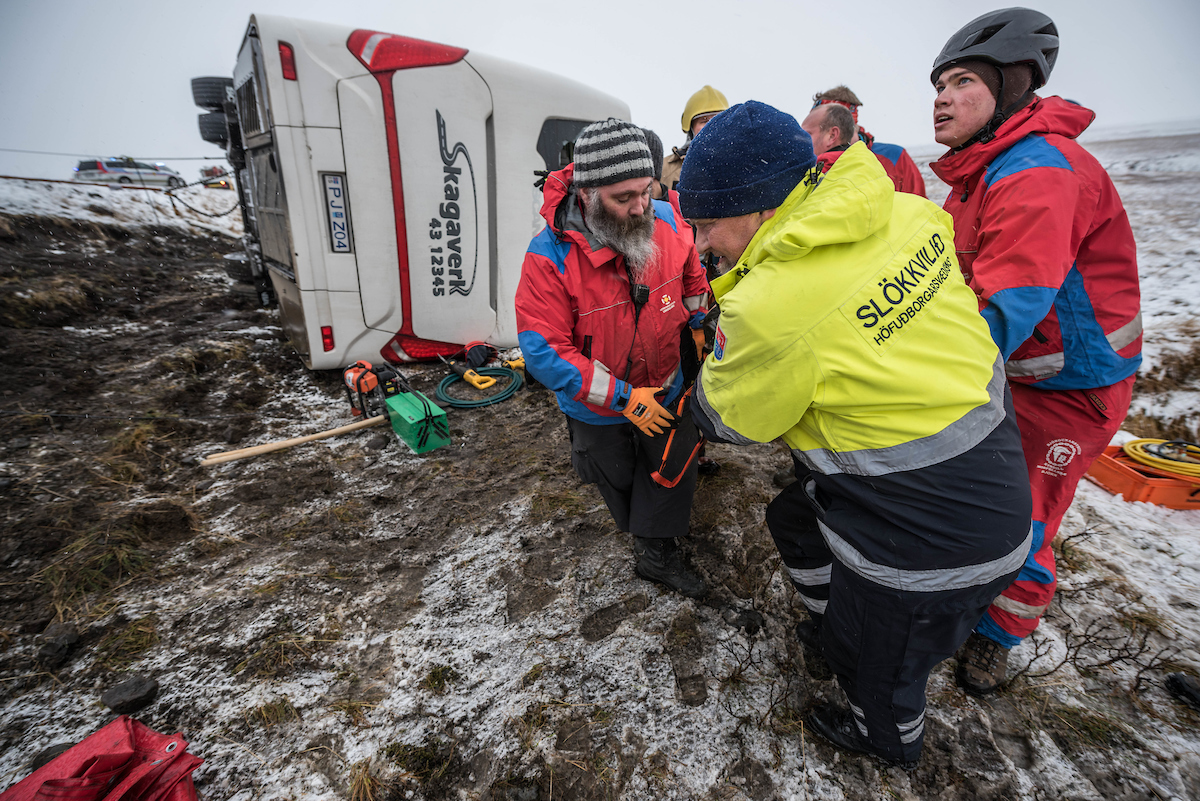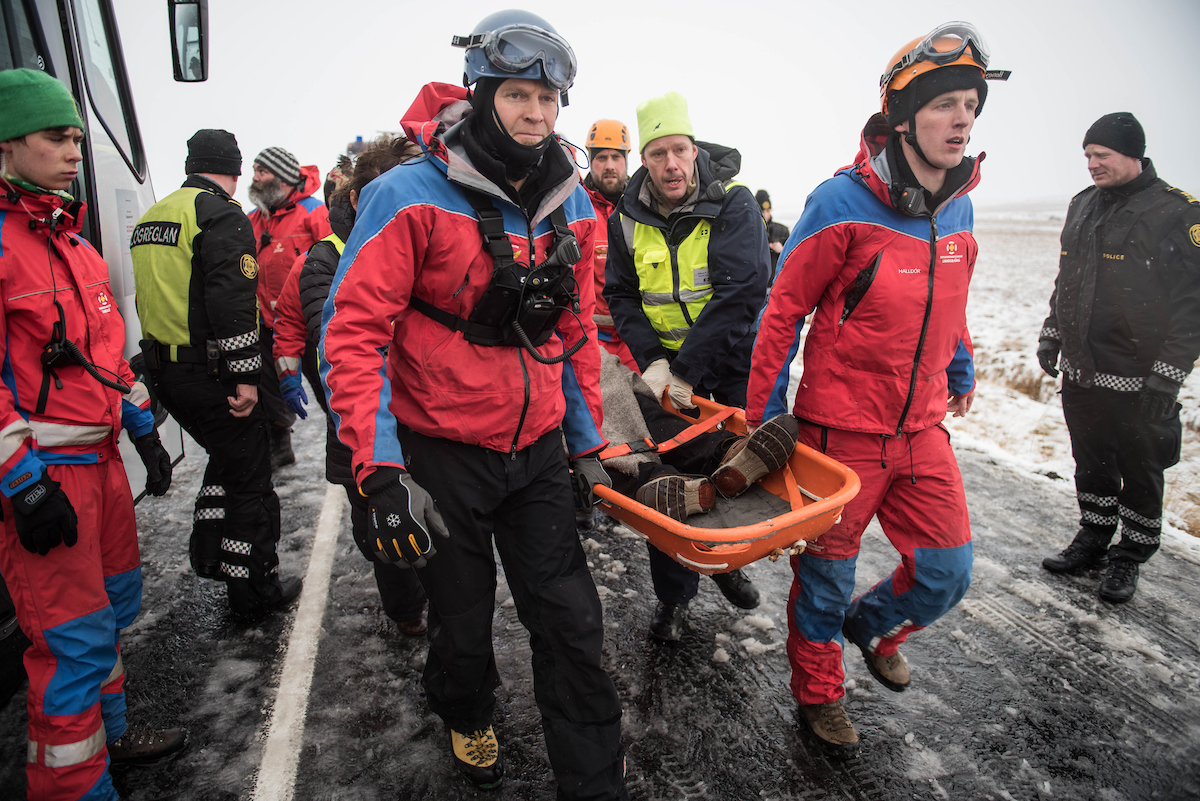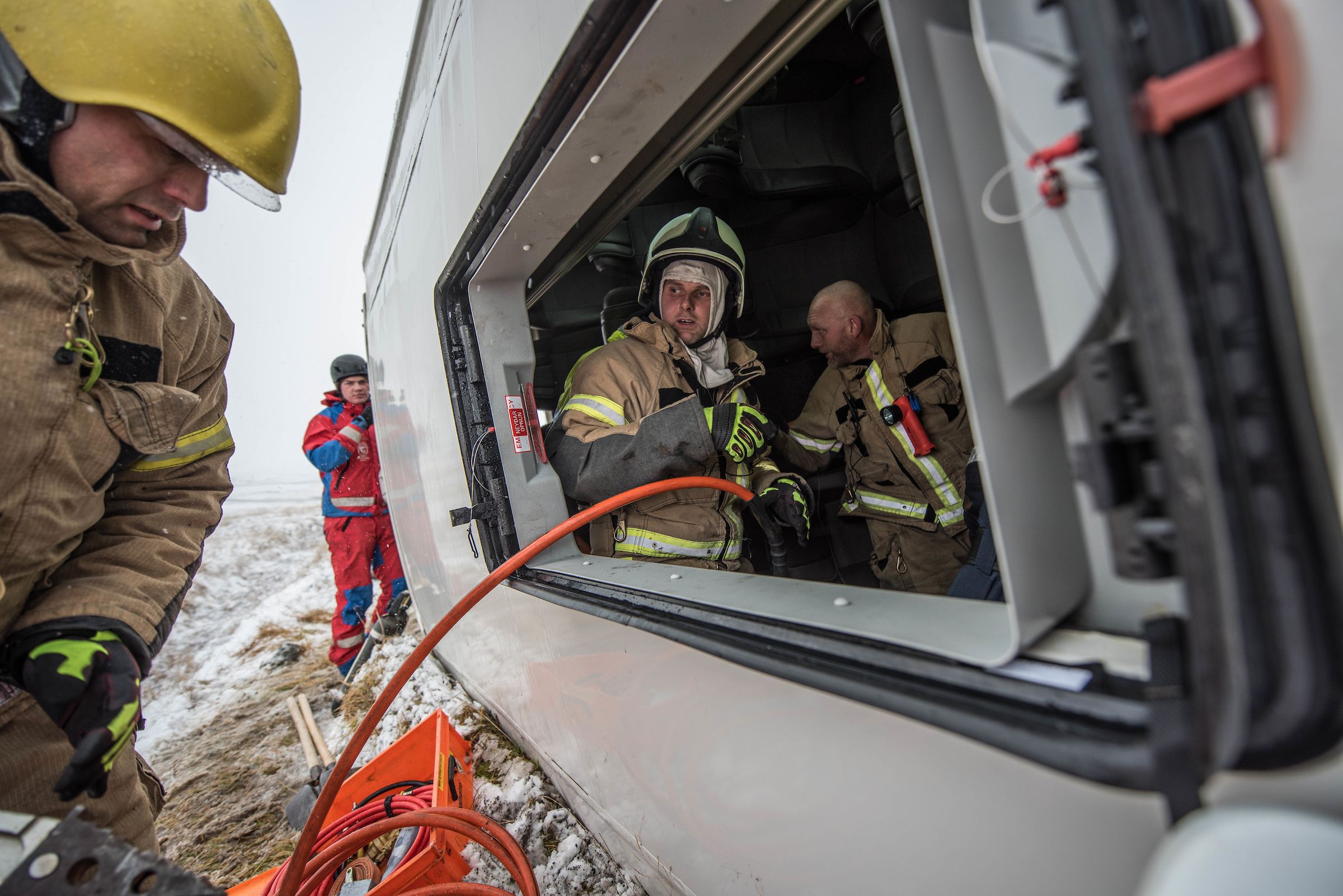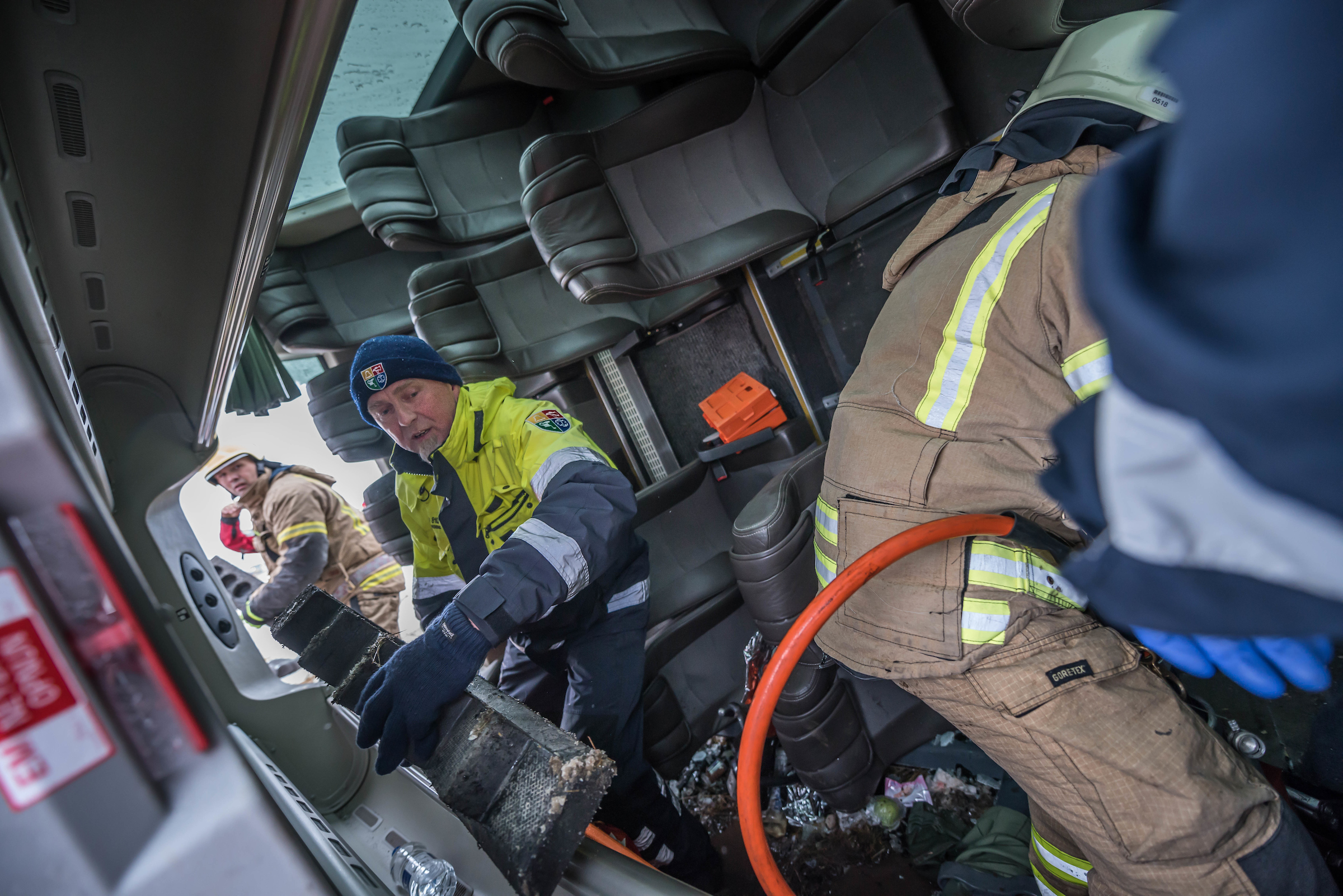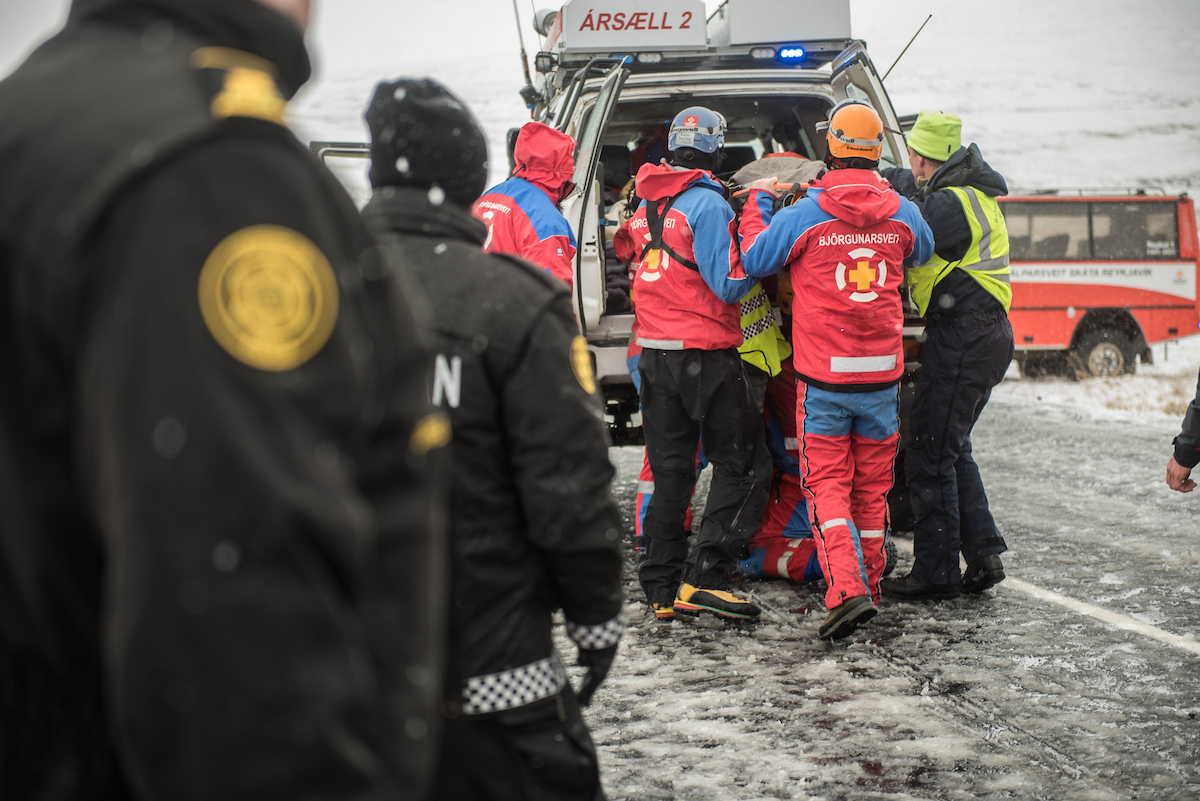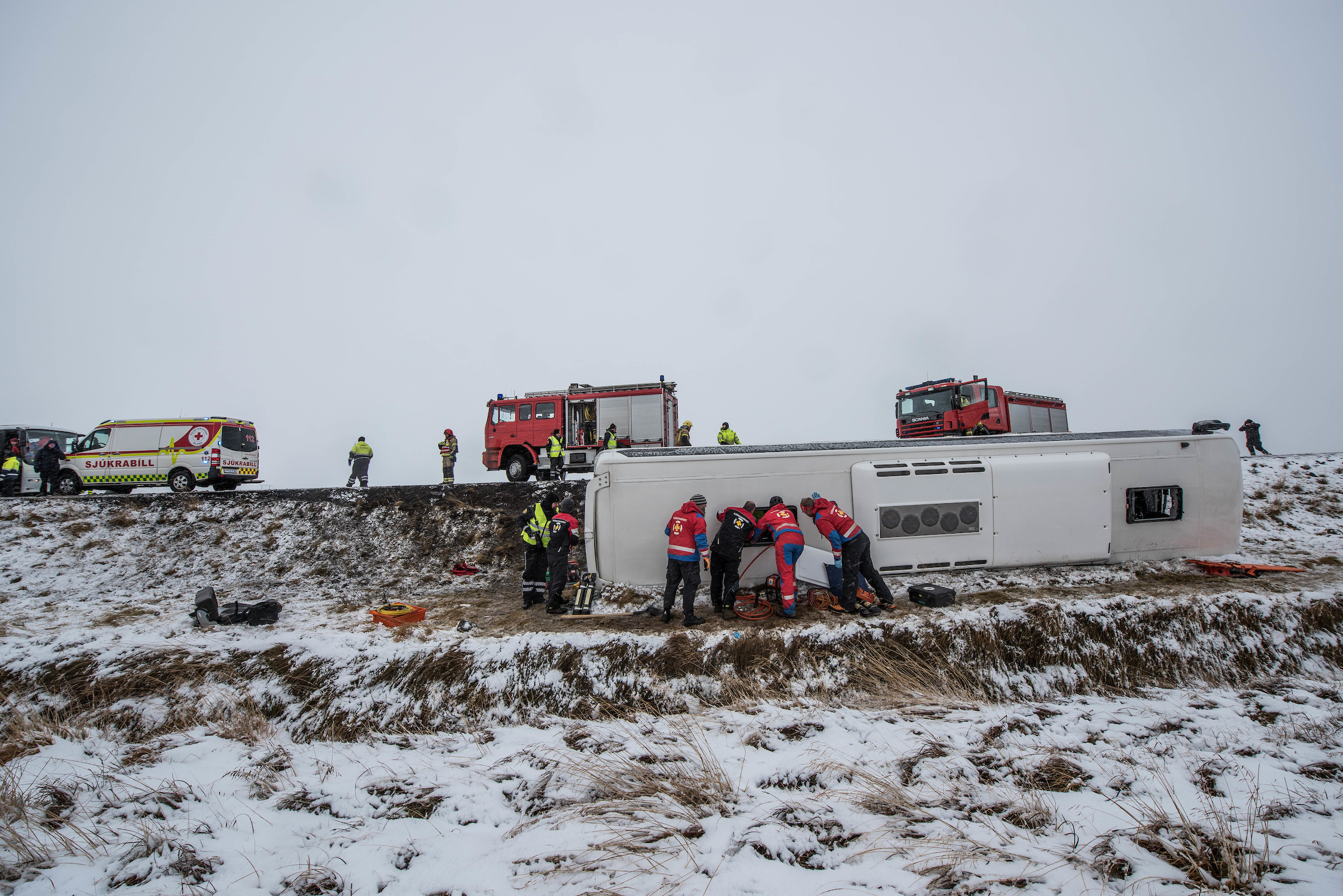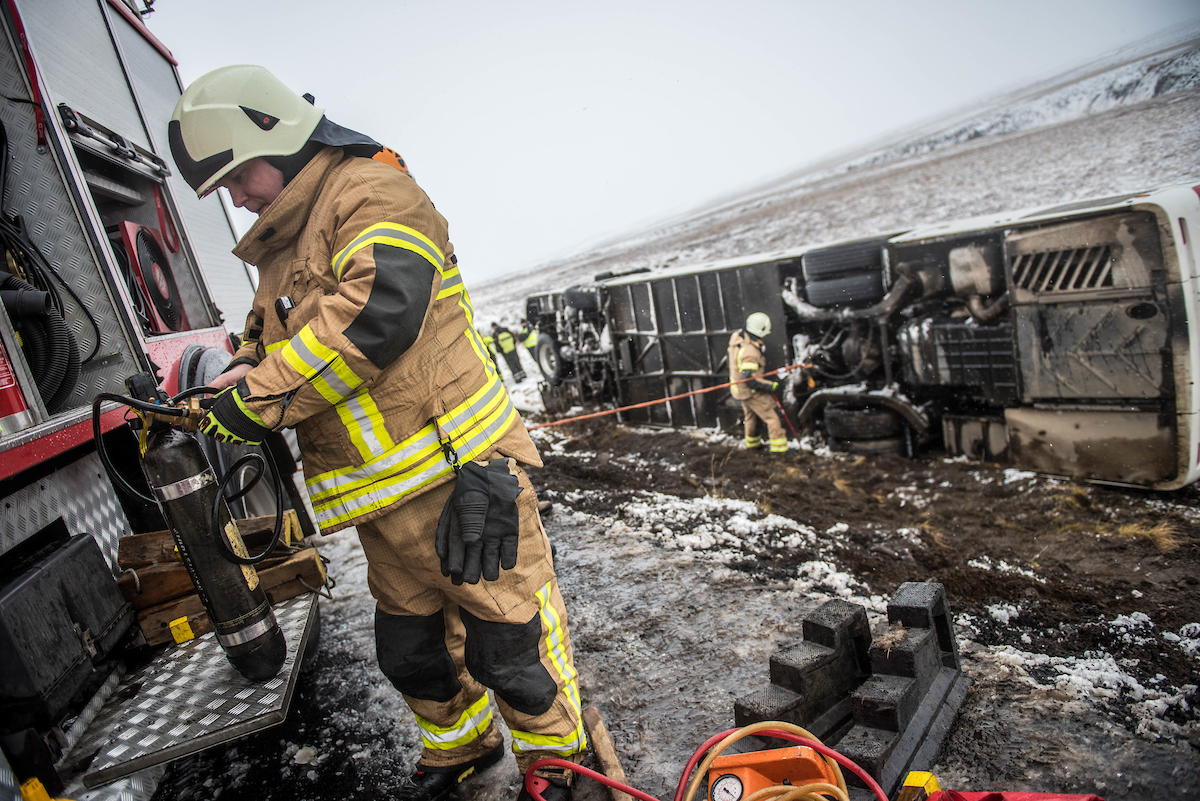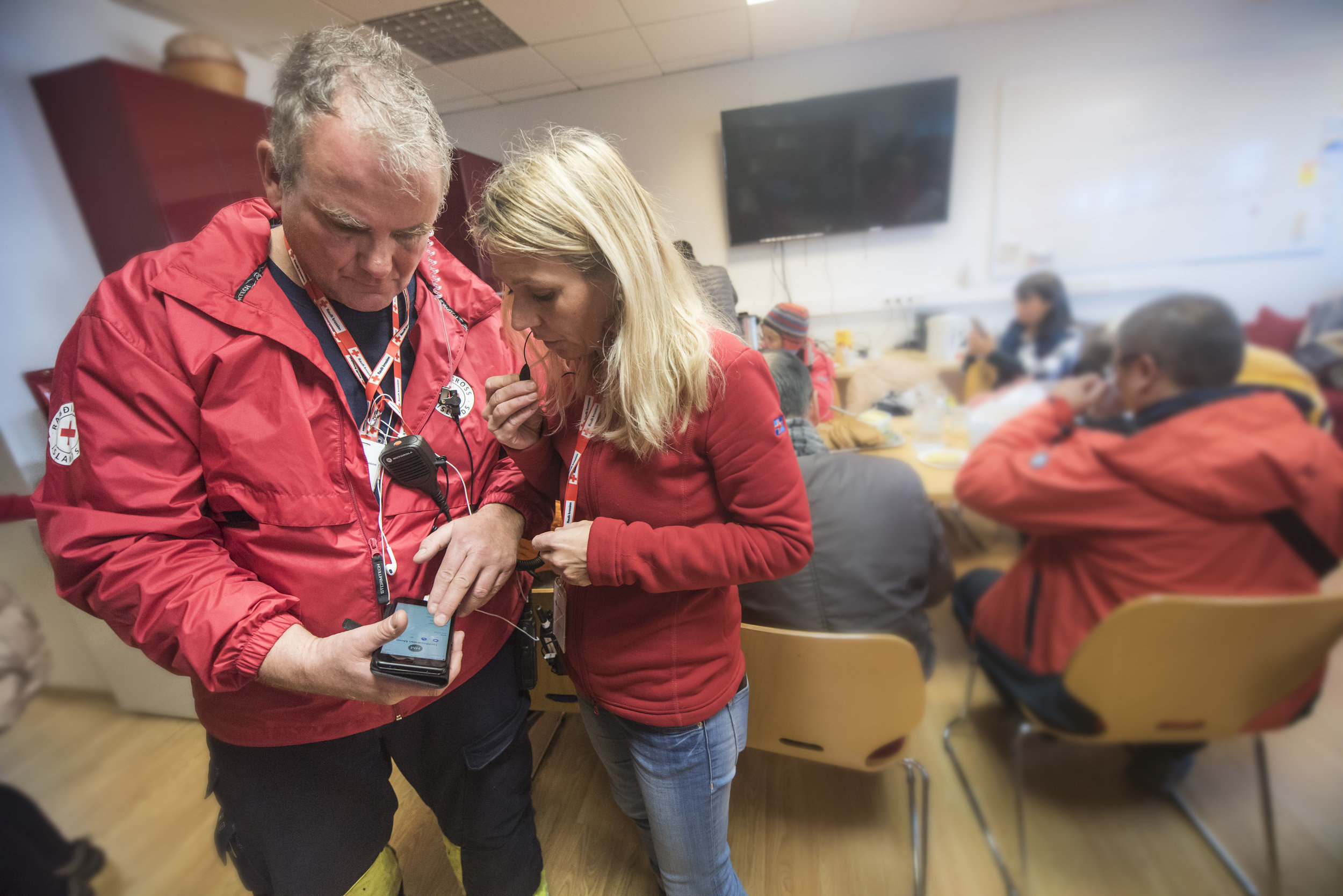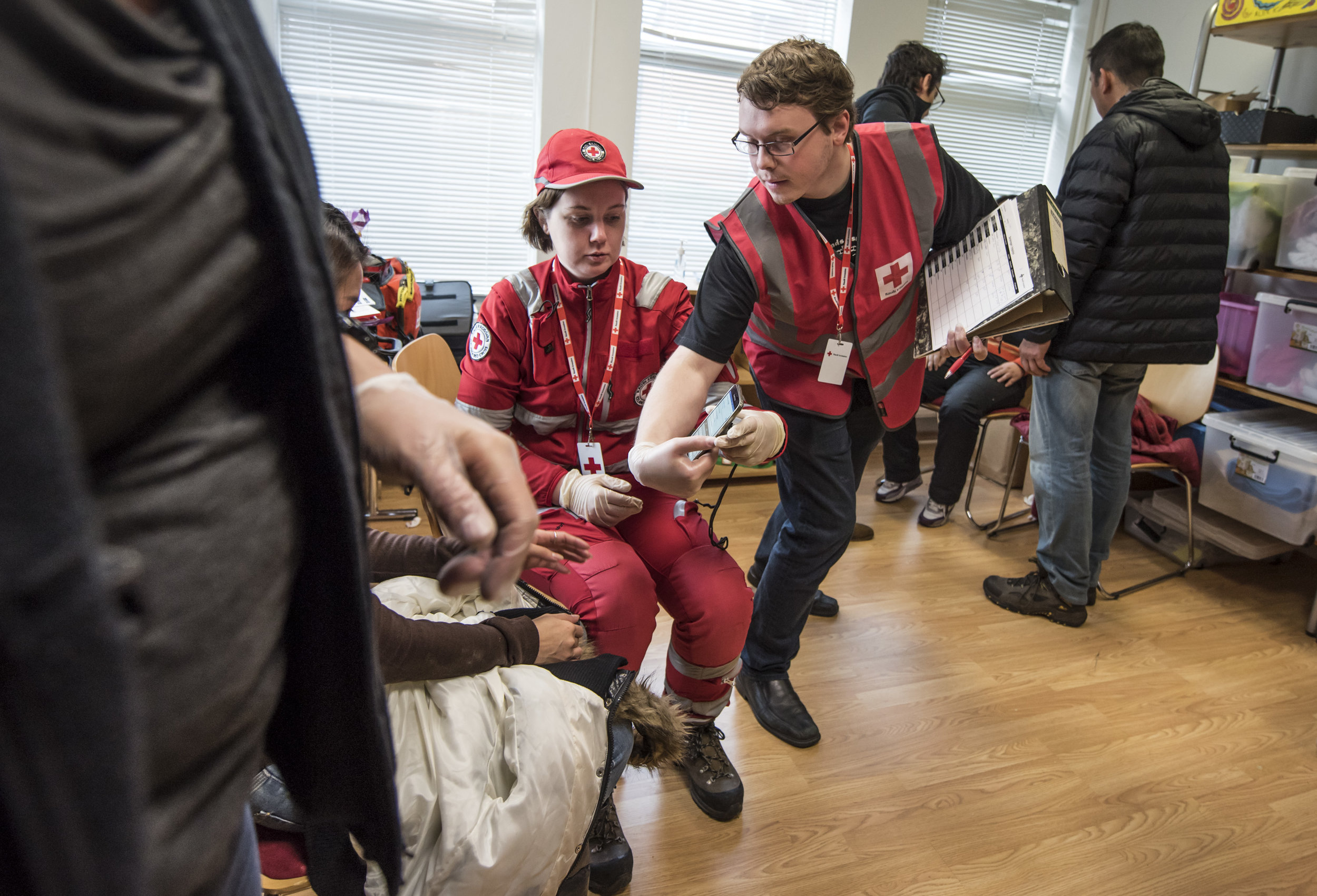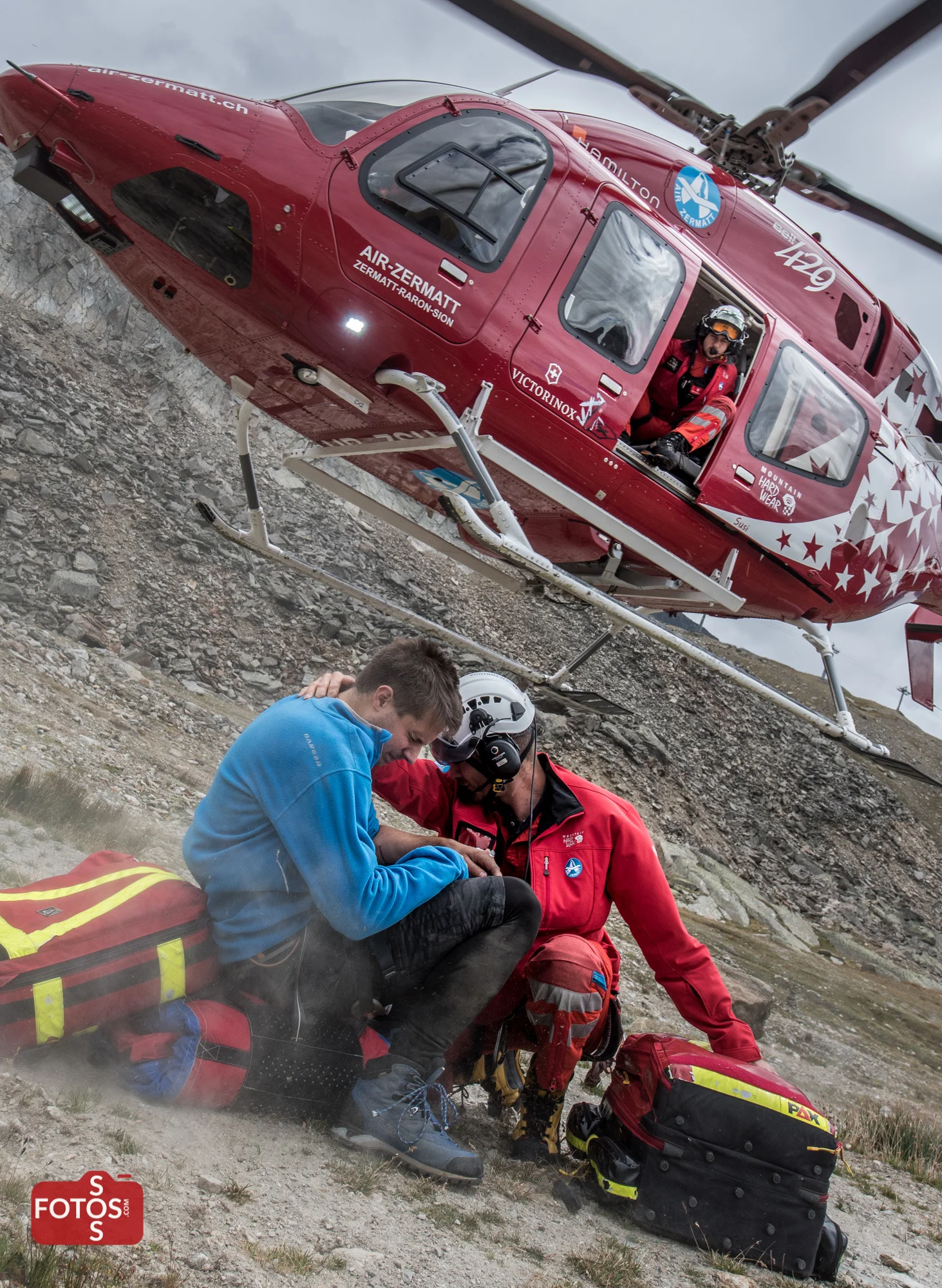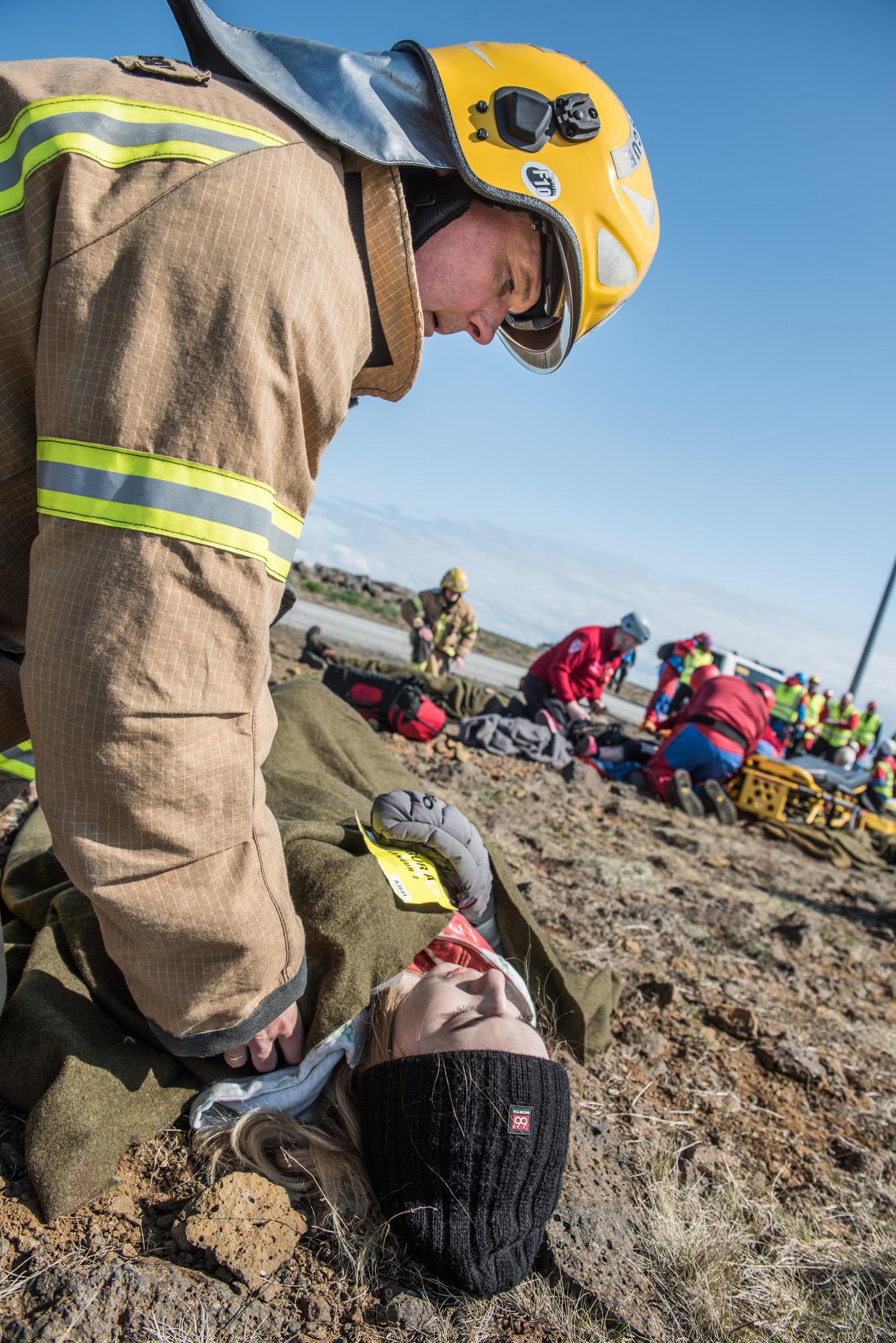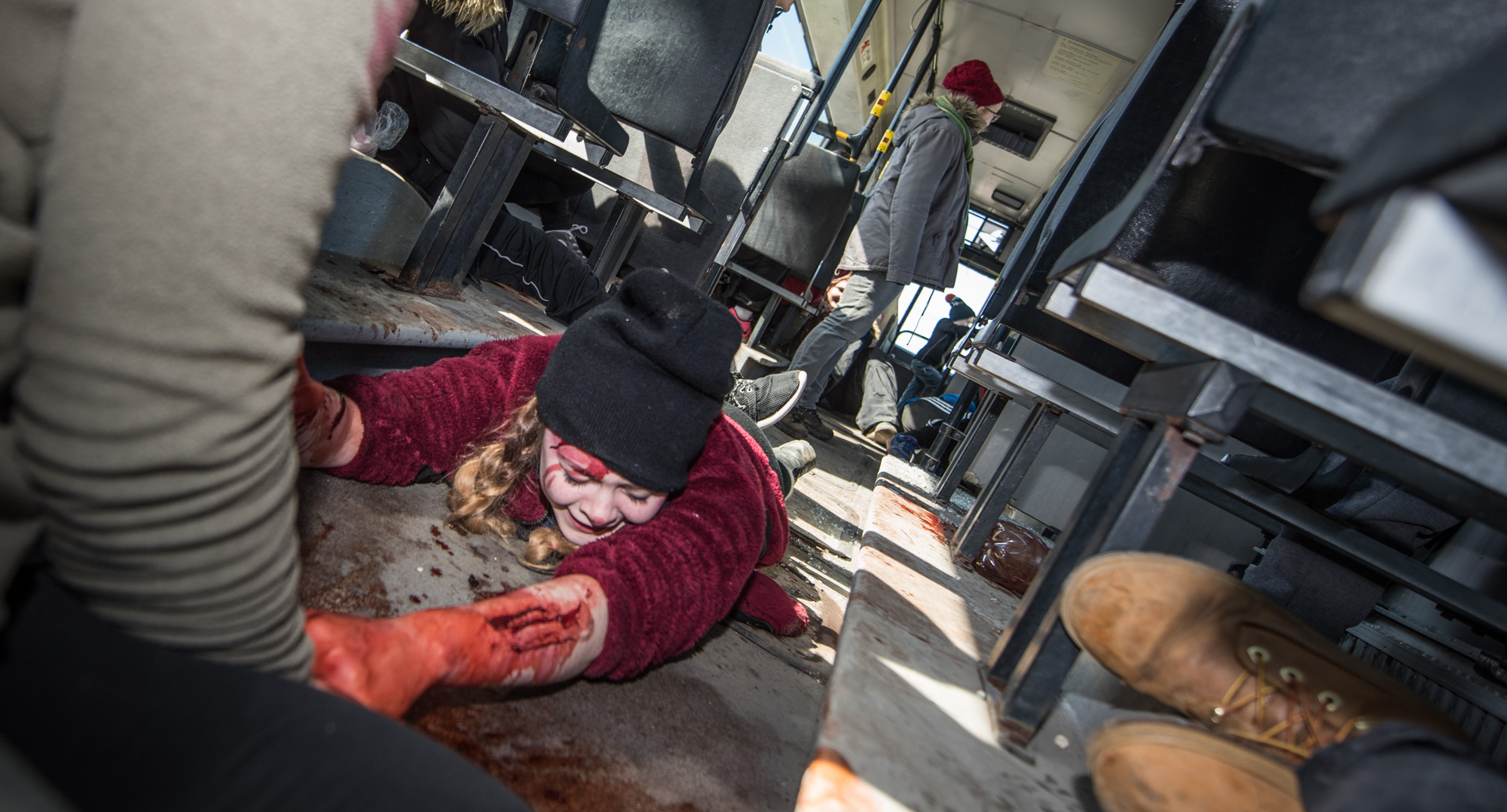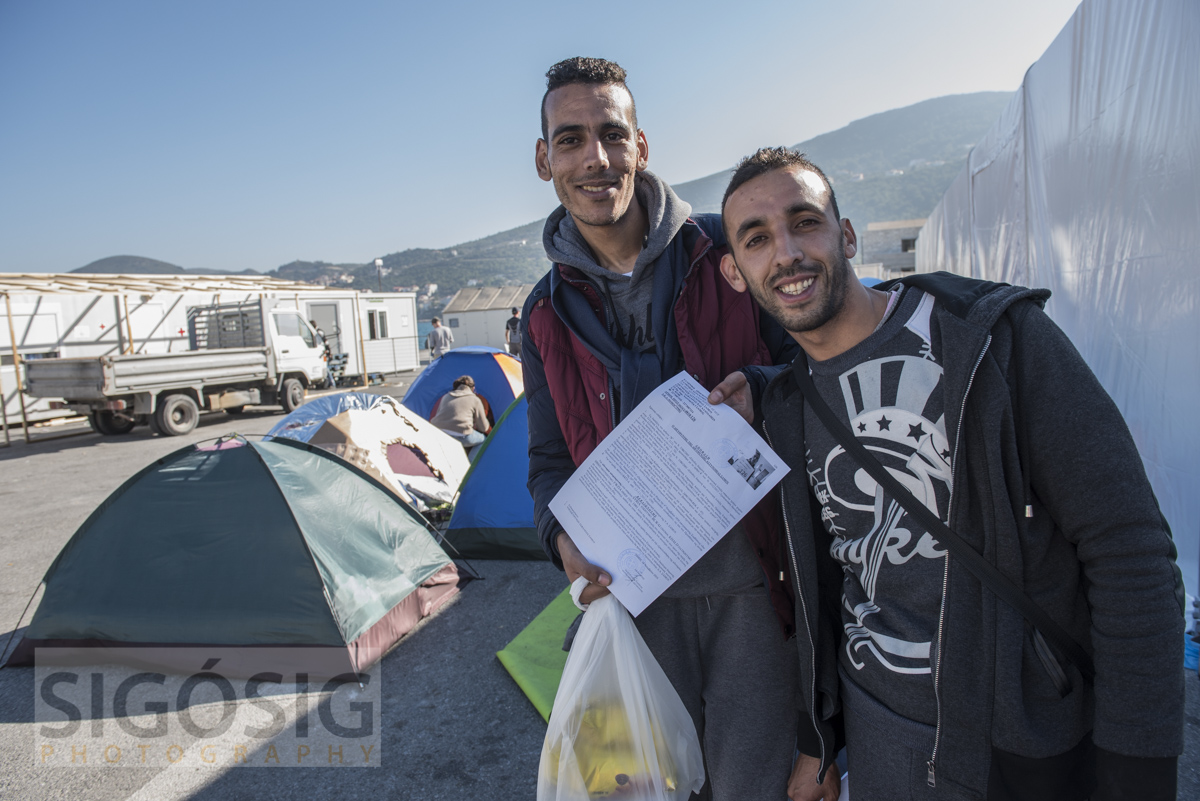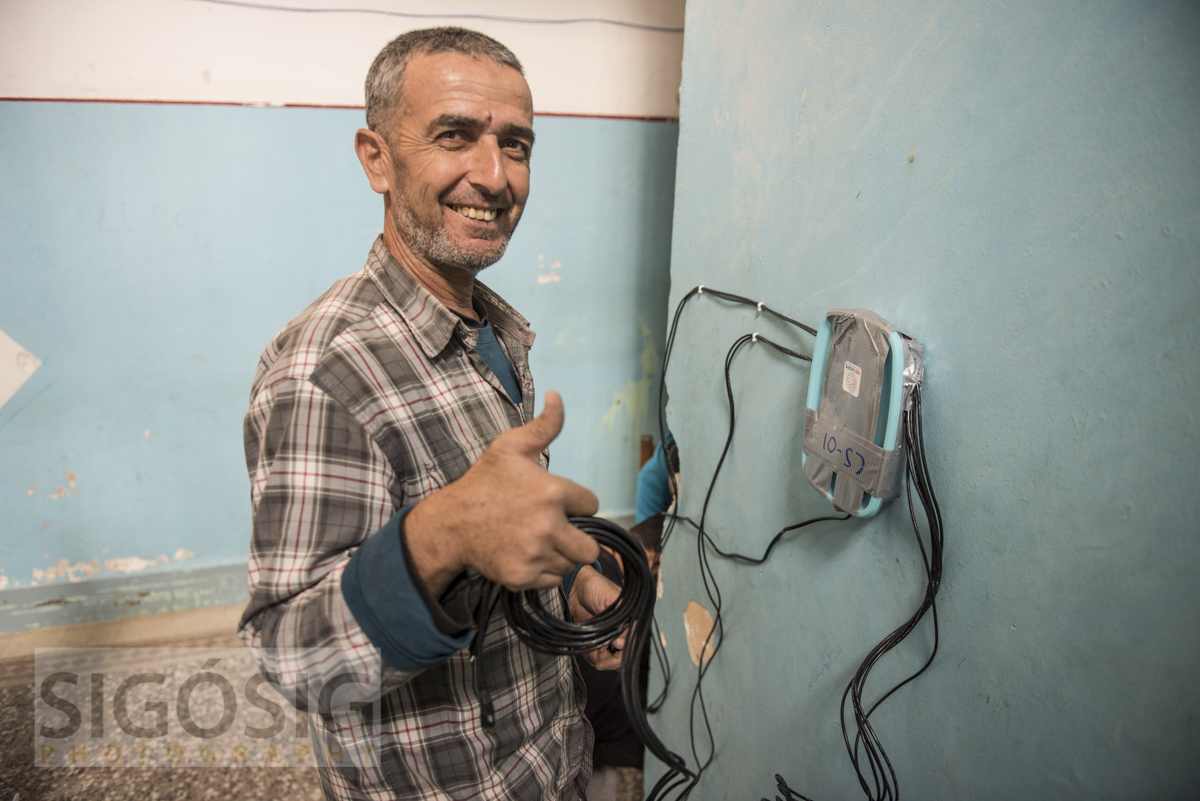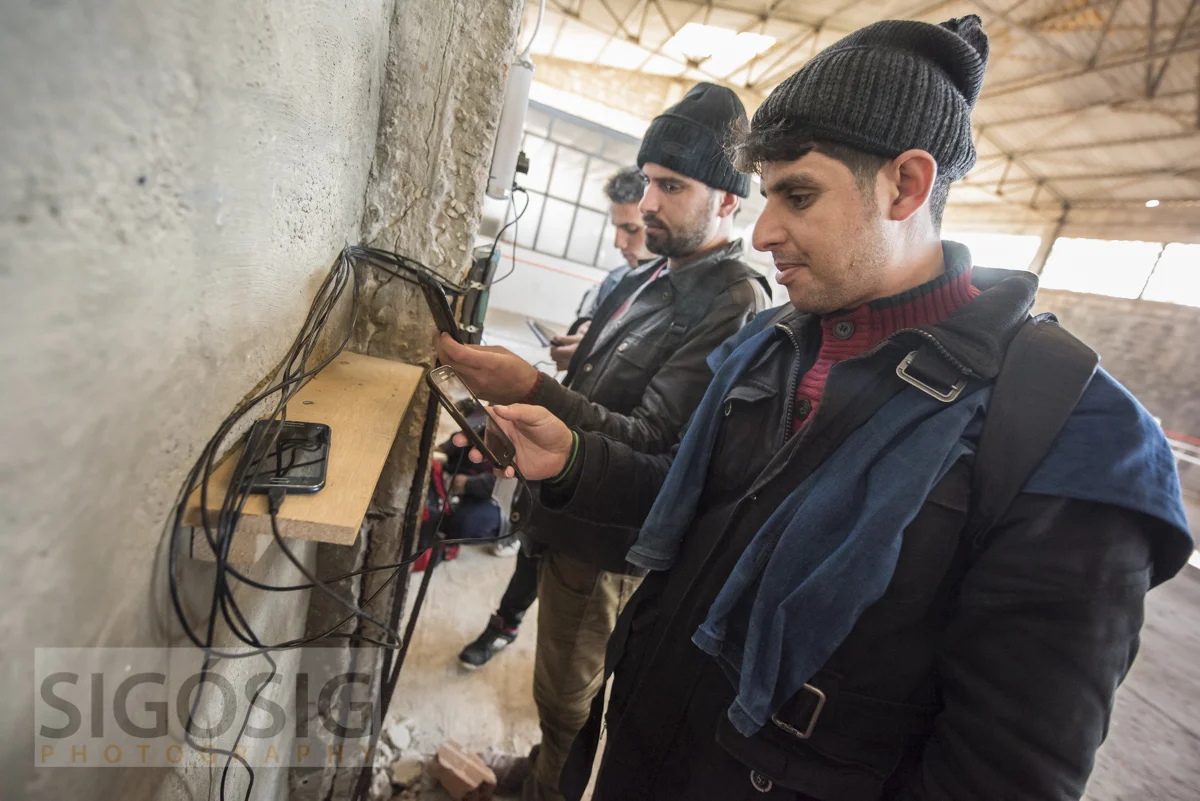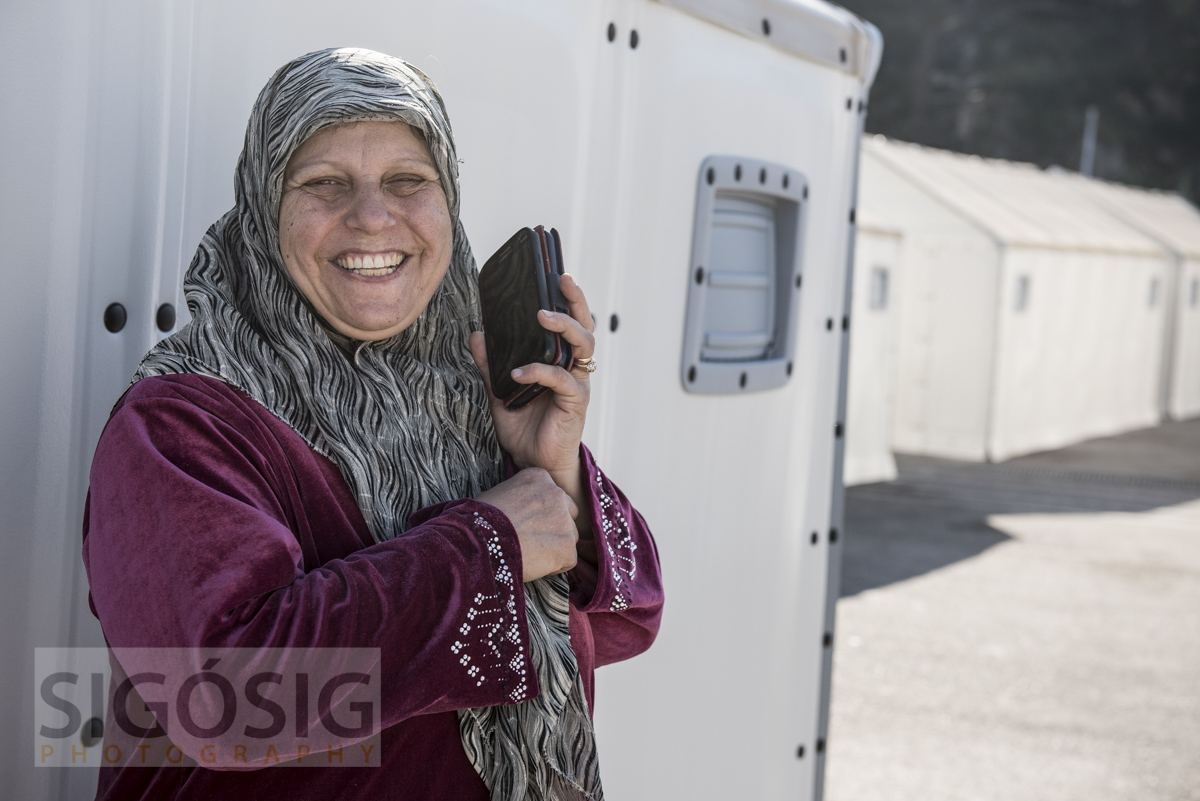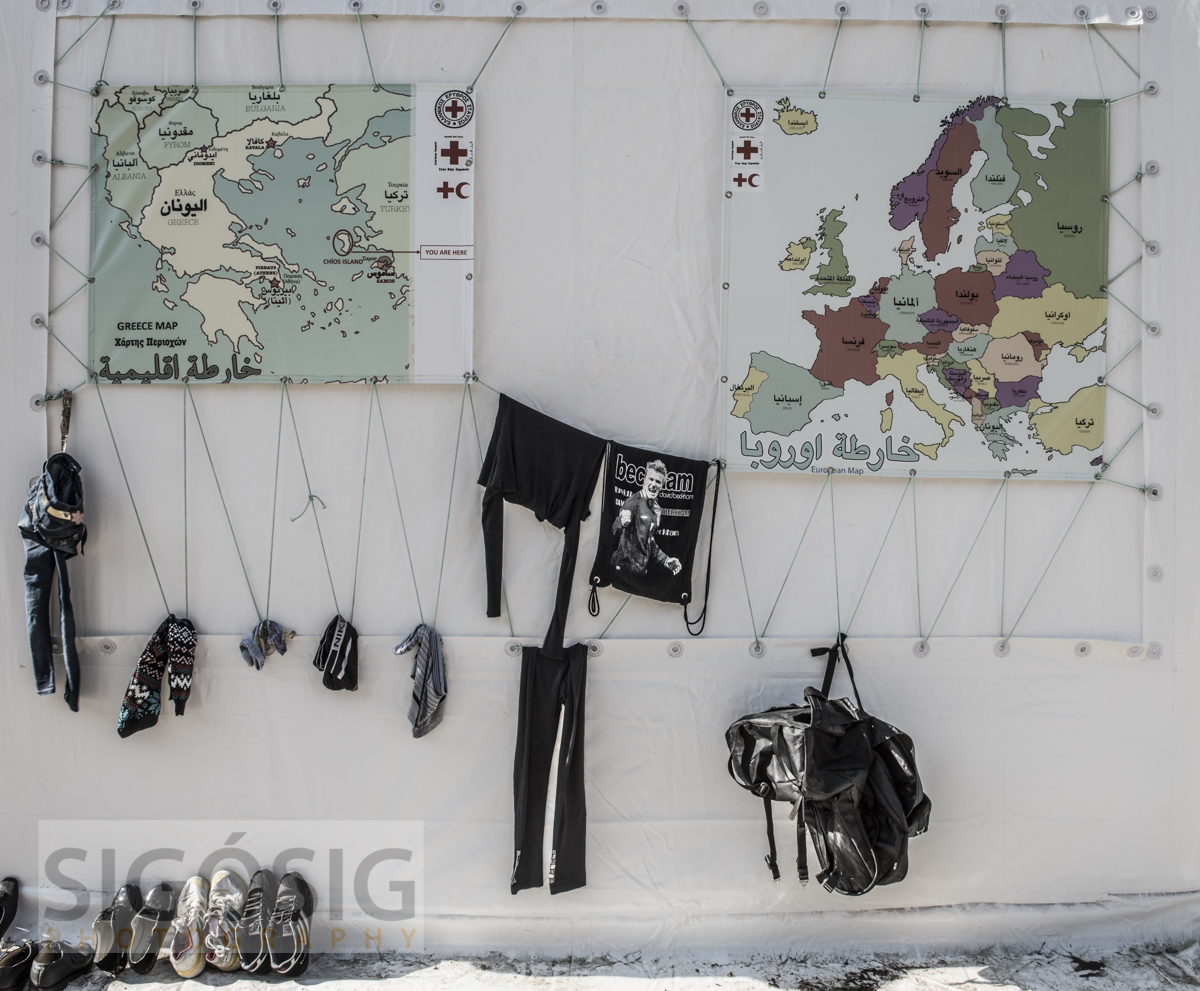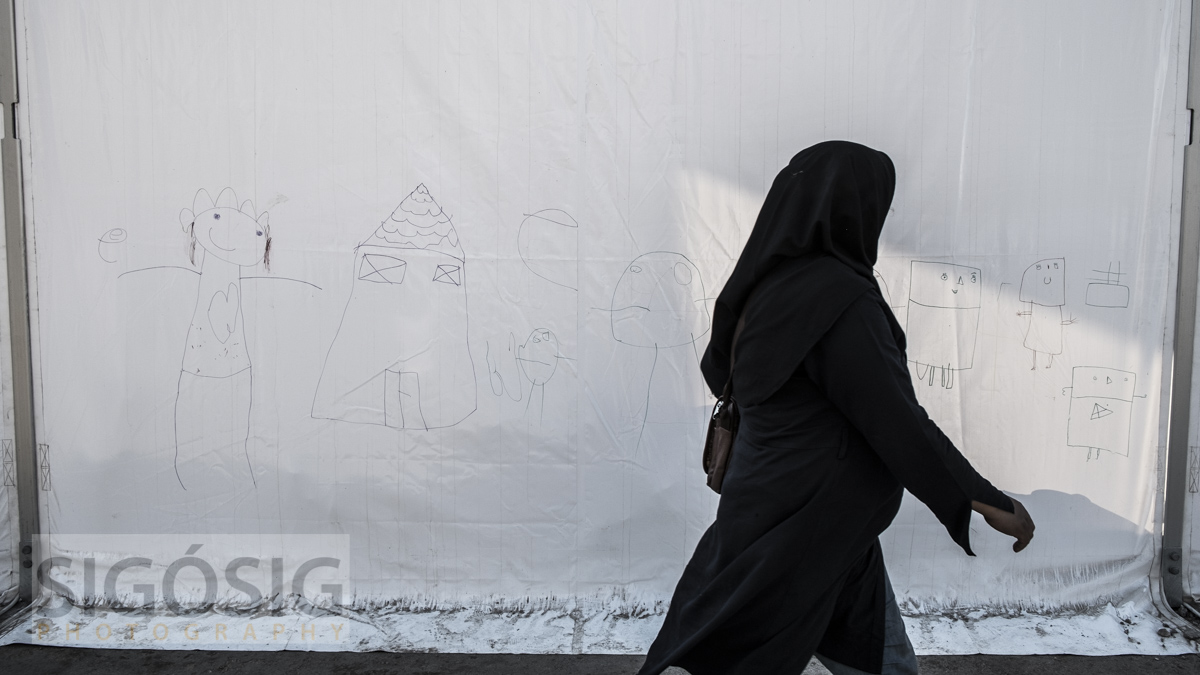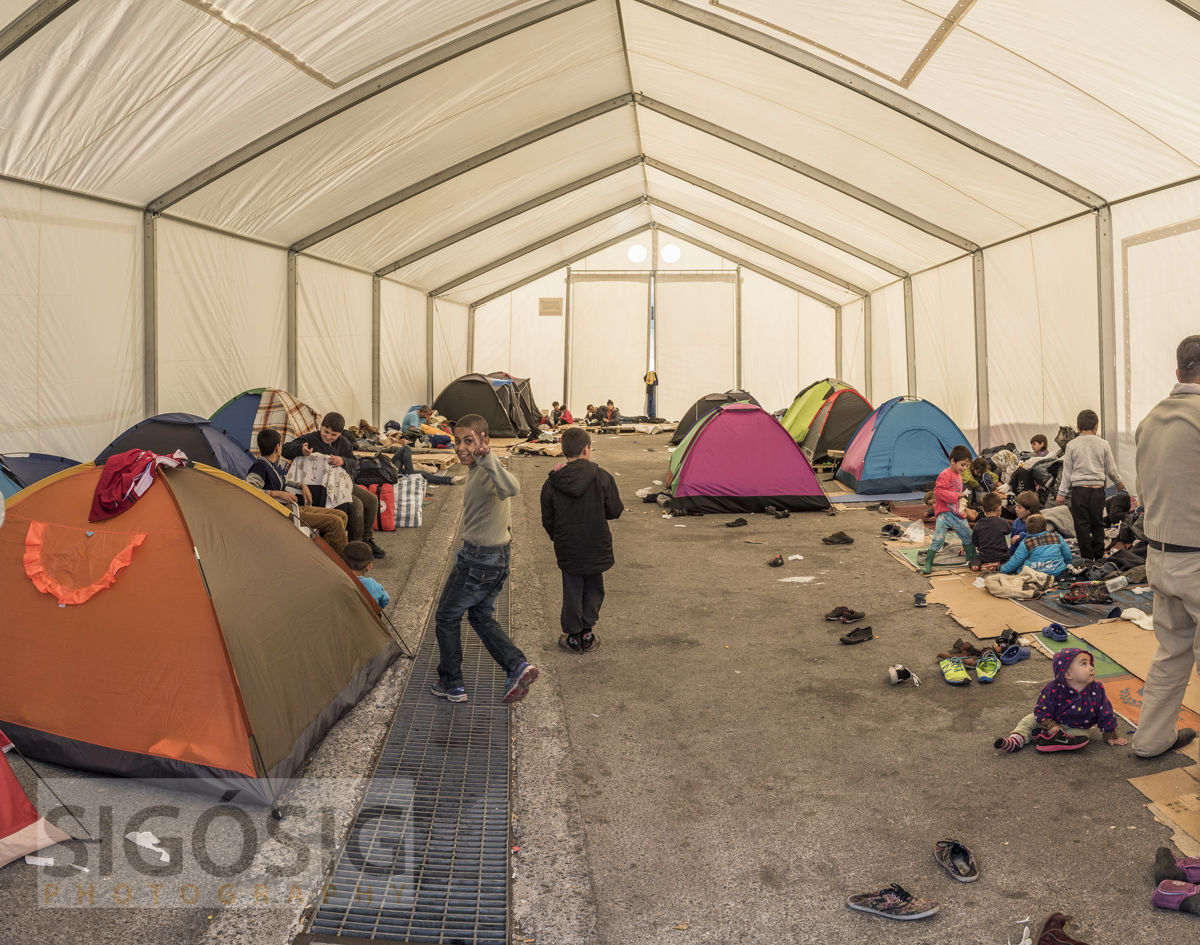When you can’t control the conditions you sometimes have to improvise and pull some photographic stunts to get the desired results. The following images are from a photoshoot for Luminox watches, all shot on a sunny and cloudless winter day in February but manipulated by a combination of location tricks and postproduction to represent the different conditions encountered by ICE-SAR teams during operations.
A simple shot lit against the sun.
This image was a simple shot with little trickery and simply shows that we can have some great conditions on callouts. Yes, that happens, although rarely. I was standing on top of the superjeeps 44” tire, spotted by a SAR team member in case I’d fall off and the only “effect” here is that I shot against the sun to get a little flare, have him backlit and shield his face from the harsh sunlight with the accompanied hard shadows and pierced eyes. The shadow on his face was then filled in with a Profoto B1 and Magnum reflector.
Snowy day in the sun.
Here I kept the sun behind the subject for backlight and lit up the shadow side with a Profoto A1, handheld by an assistant. Then I had three or four SAR team member continuously throwing snow at the models hand holding the shovel. One important detail was to have the shovel full of snow even though it can’t be seen in the image because the weight of the snow creates a strain on the hand which makes the image a bit more realistic and believable. Post production is minimal with mainly some over all sharpening, contrast and clarity.
Let it snow…
The idea here was to show some speed and movement and give a feeling of weather and conditions. Post production involved some basic overall adjustments and some dodging and burning and local sharpness and clarity but the real work was in the shooting. To get the composition right with the main snowmobiler in the foreground so close up as to make the viewer feel his presence, I stood on top the snowmobile bumper, leaning back and supported by one of the trusty SAR team members. Then it was a matter of getting the right position of the rider and syncing the second snowmobiler to be in the right place at the right speed while half a dozen of people threw snow in strategically selected places to create a realistic image of snowmobilers on a search mission. Photography is about so much more than just pressing the shutter and that’s what I love about it.
Turning day into night.
This is one of the most post produced image from that shoot. The challenge of turning day into dusk using nothing more than a single 500W Profoto B1 flash at full power. We did the normal snow throwing and piling on him, in this case not to make it look like it was snowing but rather that it had snowed and the snowmobilers had been out for a while. I underexposed for the ambient and used high speed sync to light the watch. Then I did a lot of darkening, burning, cloning and blurring of the background in post as well as sharpening and clarity and other local edits of the foreground.
